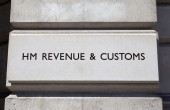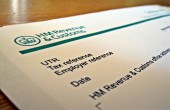What a Directors loan means and who can take one
Article Author: Cogent Accountants Posted on: September 19, 2016 (Full Author Bio in the box on the right side) 3552 views
3552 views

There are times in everybody’s life when we all need some extra finance. As a contractor you might find yourself between projects and need some extra money for living costs, or need the money to put towards a large purchase, a car for example.
There are many methods to receive a loan, such as through a bank or a virtual lender (an online company who deposit money straight into your account but who charge extortionate interest rates). If you operate through a limited company, you might be able to borrow money from the company as a directors’ loan.
If you are thinking of taking a loan from your limited company, our article is a must read. It covers what a directors’ loan means, who can take one and what you need to consider when taking a loan.
What is a directors’ loan and who can take one?
A directors’ loan is when you get money from your company that isn’t: a salary, a dividend, a expense repayment or money you previously paid into or loaned the company”, according to .Gov website.
Important points to consider
There are a number of important things to consider when taking a directors’ loan. These include:
Tax Charges
If the loan is still outstanding 9 months and one day after the year end in which the loan was made, then S455 tax will be charged to the company at a rate of 32.5% on the outstanding loan. The S455 tax is refundable from HMRC 9 months after the year end in which the loan is repaid.
Benefit in Kind
The loan will be classed as a ‘Benefit in Kind’ if the interest charged annually to the borrower is less than 3.0% (HMRC’s official rate). To avoid this ‘Benefit in Kind’ and the tax and NI charge on the benefits, the borrower must pay 3.0% annual interest to the company.
The interest that the company receives will then be taxed at 20% (Corporation Tax) and the remaining balance will be retained profit for the company.
Something to note: If a cumulative loan account is less than £10k at all times in the accounting year then there is no benefit in kind charge.
Procedure and Documentation
If the loan or cumulative loans exceed £10,000 then shareholder approval is required with formal company resolutions. Approval must be received before the loan is paid. If not, HMRC could view it as a something else, for instance a dividend and dividend tax will need to be taken in consideration.
Summary
There might come a time when you feel the need to take a directors’ loan. For instance to bridge the gap between you when last received a salary and the next dividend payment. However, even though the loan is taken from your limited company this doesn’t give you flexibility with repaying it. Failure to properly plan the loans repayment could see you getting slapped with additional tax liabilities which could cost you a lot of extra money and stress.
If you are considering taking a loan from your limited company, it is extremely important to plan how and when you will be able to repay it. If the loan is still outstanding 9 months after the year end in which the loan was paid the company is charged 32.5% on the outstanding loan.
It is also important and strongly recommended not to take all the available money out of the company as sufficient funds will need to be retained to cover future tax liabilities and also potentially the additional S455 tax.
It is also worth noting that if a repayment was made and it was intended at the time of repayment to re-borrow the money, then the repayment will be ignored for deciding if the loan has been repaid within 9 months. However, if the repayment gives rise to a charge to income tax, for example repaid as a dividend or a salary bonus then the loan will be treated as repaid.
Latest Posts
-

Staying HMRC Compliant: VAT Returns Have Chan...
by Amanda Swales on January 29, 2020 Accounting & Tax -

Self Assessment Tax Return 101 - Filling In T...
by Amanda Swales on January 15, 2020 Accounting & Tax -

-



 FCSA submits its official response to the HMRC consultation
FCSA submits its official response to the HMRC consultation  Where is your IT contracting career going
Where is your IT contracting career going  Election 2015 - what is in it for contractors and freelancers
Election 2015 - what is in it for contractors and freelancers  How will Supervision Direction or Control rules affect Contractors
How will Supervision Direction or Control rules affect Contractors  What does change in dividends mean to UK Contractors
What does change in dividends mean to UK Contractors  Do I Need To Complete The Self Assessment? How To Know If You Have A Tax Return Due
Do I Need To Complete The Self Assessment? How To Know If You Have A Tax Return Due  Is there light at the end of the tunnel for UK Contractors
Is there light at the end of the tunnel for UK Contractors  Relieve the stresses of Limited Company contracting with 4 simple solutions
Relieve the stresses of Limited Company contracting with 4 simple solutions  The rise of the female contractor
The rise of the female contractor  Umbrella Company and IR35
Umbrella Company and IR35  How to avoid time between contracts
How to avoid time between contracts  The 10 commandments of contracting
The 10 commandments of contracting  RIP Business Entity Tests
RIP Business Entity Tests  The golden rule of Contracting
The golden rule of Contracting  The future of IR35 in the public and private sectors
The future of IR35 in the public and private sectors  What all recruiters need to know
What all recruiters need to know  FCSA urges Osborne to get his facts right before tarnishing all contractors
FCSA urges Osborne to get his facts right before tarnishing all contractors  How much salary should I pay myself as a Limited Company Contractor
How much salary should I pay myself as a Limited Company Contractor  Why Contractors in trust based schemes should think twice
Why Contractors in trust based schemes should think twice  Beginners Guide to IT Contracting
Beginners Guide to IT Contracting  Budget is good for small business but still hurts contractors
Budget is good for small business but still hurts contractors  How important is it to protect your income as a contractor
How important is it to protect your income as a contractor  Registrar of Companies Scam Letter sent to Businesses
Registrar of Companies Scam Letter sent to Businesses  Sole Enterprise with Protected Assets or Limited Company - Which is better for Contractors?
Sole Enterprise with Protected Assets or Limited Company - Which is better for Contractors?  5 Trusted Contractor Services Providers in the UK
5 Trusted Contractor Services Providers in the UK  First Time Buyers get cashback on Contractor Mortgages
First Time Buyers get cashback on Contractor Mortgages  First Time Buyers take advantage of the new Help to Buy ISA
First Time Buyers take advantage of the new Help to Buy ISA  Amendments in Finance Bill to prevent misuse of Personal Service Companies
Amendments in Finance Bill to prevent misuse of Personal Service Companies  UK plc confused about T&S regulations says FCSA research
UK plc confused about T&S regulations says FCSA research  Why Brexit will not be an easy exit
Why Brexit will not be an easy exit  Top 5 things a first-time Contractor should do when switching to Contracting
Top 5 things a first-time Contractor should do when switching to Contracting  How IT Contractors can become an expenses wizard
How IT Contractors can become an expenses wizard  HMRC admits contractor tax change legislation needs a rewrite
HMRC admits contractor tax change legislation needs a rewrite  The top 3 common mistakes Contractors make
The top 3 common mistakes Contractors make  Simple guide to Tax relief on Motor expenses and business mileage
Simple guide to Tax relief on Motor expenses and business mileage  How to deal with unplanned time off for UK Contractors
How to deal with unplanned time off for UK Contractors  MP David Morris calls for new IR35 legislation for Contractors
MP David Morris calls for new IR35 legislation for Contractors  Fun ways to save money for the adventurous contractor
Fun ways to save money for the adventurous contractor  Why it is important for Contractors to network effectively
Why it is important for Contractors to network effectively  Autumn Statement 2016 - How will the VAT Flat Rate Scheme Restriction Affect Contractors?
Autumn Statement 2016 - How will the VAT Flat Rate Scheme Restriction Affect Contractors?  What is Required For Your First Digital VAT Return: Making Tax Digital
What is Required For Your First Digital VAT Return: Making Tax Digital  5 benefits of contracting through an umbrella company
5 benefits of contracting through an umbrella company  Why Contractors Need To Understand IR35
Why Contractors Need To Understand IR35  10 Must Have iOS Apps for UK Contractors
10 Must Have iOS Apps for UK Contractors  Why Contractors should never stop learning
Why Contractors should never stop learning  Why compliance has lost its meaning for contractors
Why compliance has lost its meaning for contractors  Benefits for Freelance Contractor Mortgages Insurance
Benefits for Freelance Contractor Mortgages Insurance  What is Contractor Mortgages and how to secure the best mortgage deal?
What is Contractor Mortgages and how to secure the best mortgage deal?  Intermediaries' legislation - IR35: What is the likely impact of the new rules for contractors working in the public sector?
Intermediaries' legislation - IR35: What is the likely impact of the new rules for contractors working in the public sector?  Insulting to Contractors
Insulting to Contractors  Is it time to break up with your Accountant
Is it time to break up with your Accountant  IR35 IT Contractors And Office Holders
IR35 IT Contractors And Office Holders  The Taxman is going to war on UK Contractors
The Taxman is going to war on UK Contractors  Doubt is cast on HMRC new IR35 proposals for contractors
Doubt is cast on HMRC new IR35 proposals for contractors  How does the recent IR35 changes in the public sector affect UK contractors?
How does the recent IR35 changes in the public sector affect UK contractors?  Professional Indemnity Insurance Explained
Professional Indemnity Insurance Explained  What a Directors loan means and who can take one
What a Directors loan means and who can take one  General Elections from the Tax perspective for UK Contractors
General Elections from the Tax perspective for UK Contractors  Understanding tax basics - a guide for contractors
Understanding tax basics - a guide for contractors  The true value of umbrella companies for UK contractors
The true value of umbrella companies for UK contractors  Changes to the Flat Rate VAT Scheme are coming - are YOU ready?
Changes to the Flat Rate VAT Scheme are coming - are YOU ready?  FCSA calls for HMRC to abandon its consultation on public sector use of off payroll staff
FCSA calls for HMRC to abandon its consultation on public sector use of off payroll staff  How will Autumn statement affect Contractors?
How will Autumn statement affect Contractors?  A checklist and timeline for new Contractors
A checklist and timeline for new Contractors  Personal Service Company Guide for UK Contractors
Personal Service Company Guide for UK Contractors  Contractors feel puzzled of the UK job market
Contractors feel puzzled of the UK job market  Top 10 cash flow tips for IT Contractors
Top 10 cash flow tips for IT Contractors  Great Chance to Win a Trip to Monaco for IT Contractors
Great Chance to Win a Trip to Monaco for IT Contractors  Barclays and Citigroup are the latest to cut IT Contractor pay
Barclays and Citigroup are the latest to cut IT Contractor pay  How will the new tax year affect IT Contractors and Umbrella Companies
How will the new tax year affect IT Contractors and Umbrella Companies  Festive Gift Ideas for Limited Company Directors
Festive Gift Ideas for Limited Company Directors  Contractor paid 2500 GBP to HMRC for tax return mess up
Contractor paid 2500 GBP to HMRC for tax return mess up  Will the low rates mortgage price war benefit UK Contractors?
Will the low rates mortgage price war benefit UK Contractors?  Is Umbrella Company the best solution for first-time Contractors?
Is Umbrella Company the best solution for first-time Contractors?  Why Contractors should set up a home office
Why Contractors should set up a home office  How can a contractor be a winner in the tax race
How can a contractor be a winner in the tax race  Why Contractors MUST Download TeraCopy Freeware
Why Contractors MUST Download TeraCopy Freeware  What forms do I need to submit In my tax return?
What forms do I need to submit In my tax return?  What can Limited Company contractors expect from the Budget 2017?
What can Limited Company contractors expect from the Budget 2017?  What is the 24 month rule and how does it apply to Contractors
What is the 24 month rule and how does it apply to Contractors  How IR35 reforms in the private sector going to affect the self-employed?
How IR35 reforms in the private sector going to affect the self-employed?  6 free tools all contractors should use
6 free tools all contractors should use  Is contracting the key to a successful and family-friendly career
Is contracting the key to a successful and family-friendly career  Why Contractors should save for a rainy day
Why Contractors should save for a rainy day  How the 2015 Budget could affect you as an Independent Contractor
How the 2015 Budget could affect you as an Independent Contractor  APSCo backs call for strategic review which could end raw deal for contractors
APSCo backs call for strategic review which could end raw deal for contractors  How HMRC continue to confuse matters for Contractors and Agencies
How HMRC continue to confuse matters for Contractors and Agencies  Parents working full time file petition for free childcare
Parents working full time file petition for free childcare  HMRC Employment Status Service tool - How accurate is it in determining the IR35 risk for contractors?
HMRC Employment Status Service tool - How accurate is it in determining the IR35 risk for contractors?  5 New Contractor Mortgages Friendly Lenders Enter The Market
5 New Contractor Mortgages Friendly Lenders Enter The Market  Chancellor announced dividend tax hike from April 2016
Chancellor announced dividend tax hike from April 2016  How Important is IR35 and Tax Planning to Contractor Accountants
How Important is IR35 and Tax Planning to Contractor Accountants  RTI offers annual option for contractors
RTI offers annual option for contractors 

